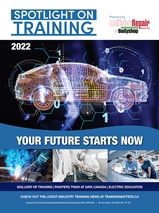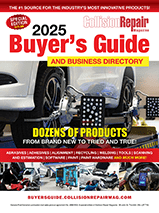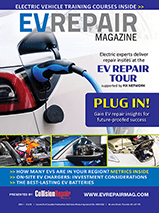DUBLIN–(BUSINESS WIRE)–The “United States Autonomous Vehicles Market, Size, Forecast 2021-2030, Industry Trends, Growth, Impact of COVID-19, Opportunity Company Analysis” report has been added to ResearchAndMarkets.com’s offering.
United States Autonomous Vehicles Market will reach US$ 186.40 Billion by 2030, from $4 Billion in 2021.
As the global leader in technology, American ingenuity and innovation have historically transformed how they travel and connect. Under this Administration, America’s continued leadership in emerging technologies, including Autonomous Vehicles.
The autonomous car is also known as a self-driving car or driverless car that can read and sense the environment and use minimal or no human information. Self-driving cars have become the primary revolution in connectivity technology and automation in the United States. The internet, computers, smartphones, and advanced technologies merge with vehicles to assist and automate driving operations.
Regardless, favorable government initiatives and financial support are some of the significant factors attributing to the growth of the United States autonomous vehicle industry. A wide range of products and systems contribute to the United States’ infrastructure of autonomous vehicles.
Autonomous vehicles provide self-mobility for non-drivers and people with disabilities. Due to the rising technical advancements, these vehicles are equipped with a broad range of technologies and comfort systems, permitting Americans to relax, read, and work while traveling.
United States Autonomous Vehicles Industry was US$ 4.00 Billion in 2021
US autonomous car industry is likely to be dominated by the autonomous vehicle, as the demand for ease in driving and the growing concern for security and safety lead to the need for high-end technology, resulting in the increased demand for semi-autonomous and autonomous vehicles.
By the level of automation, the US autonomous car market is considerable by Level 3 and Level 4. The independent vehicle driving system in Level 3 automation vehicles serves all the dynamic driving tasks, expecting the human driver. The active driving task includes braking, accelerating, monitoring the car, steering, and responding to events happening on the road.
Self-driving cars have already been tested and utilized in Texas, Arizona, Washington, Michigan, California, and other states of the United States. Nonetheless, their mobility is restricted to specific test areas and driving conditions. Audi is the first company to design a Level 3 autonomous car. In 2020, the Audi Company launched the Audi A8 on the autonomous market.
United States Autonomous Vehicles Market Size will expand at a CAGR of 53.24% from 2021-2030
US autonomous car market is consolidated by key players, such as Apple, Google, and Mercedes-Benz. To remain competitive, market players contribute significantly to market growth through various strategies such as new product launches, mergers and acquisitions, government partnerships, and technological advancements.
Furthermore, the companies are expected to grow during the forecast period, owing to increased support from governments and the private sector to promote autonomous driving vehicle technology in several countries.
Key Topics Covered:
1. Introduction
2. Research Methodology
3. Executive Summary
4. Market Dynamics
4.1 Growth Drivers
4.2 Challenges
5. United States Autonomous Vehicles Market
5.1 Semi-Autonomous Driving
5.2 Self-Driving Car
5.2.1 Level 4: High Automation
5.2.2 Level 5: Full Automation
6. Numbers – Autonomous Vehicles Market
6.1 Semi-Autonomous Driving
6.2 Self Driving Car
6.2.1 Level 4: High Automation
6.2.2 Level 5: Full Automation
7. Market Share
7.1 Hardware vs. Software – Autonomous Vehicles
7.2 By Level of Driving (L3, L4 & L5)
7.3 By Technology – Hardware Components
7.4 By Technology – Software Components
8. Technology
8.1 Hardware Components
8.2 Software Components
9. Market Analysis – Hardware Components
9.1 LIDAR
9.2 Radar
9.3 Camera
9.4 Actuators
9.5 Embedded Modem
9.6 Embedded Controls Hardware
9.7 Passive Components
9.8 Other Electronics & Architecture
9.9 Odometry Sensors
9.10 Ultrasonic Sensors
9.11 V2X Hardware
9.12 Mapping Hardware
9.13 HMI Hardware
10. Market Analysis – Software Components
10.1 V2X Software
10.2 Embedded Controls Software
10.3 Mapping Software
10.4 Data Security Software
10.5 HMI Software
11. Company Analysis
11.1 Google
11.1.1 Overview
11.1.2 Recent Developments
11.2 Apple
11.3 Mercedes-Benz
For more information about this report visit https://www.researchandmarkets.com/r/jnf4o0
Contacts
ResearchAndMarkets.com
Laura Wood, Senior Press Manager
press@researchandmarkets.com
For E.S.T Office Hours Call 1-917-300-0470
For U.S./CAN Toll Free Call 1-800-526-8630
For GMT Office Hours Call +353-1-416-8900



















